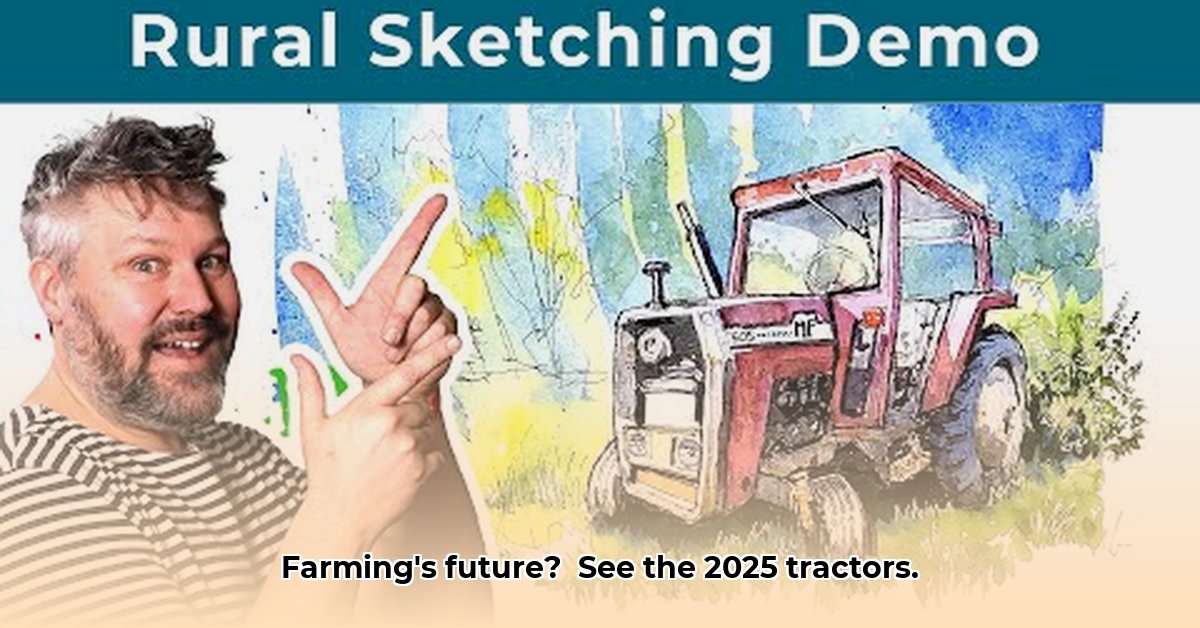
Tractor Sketches: A Glimpse into Sustainable Farming's Future
The recent closure of Tractorsketch.com, a website dedicated to showcasing tractor designs and agricultural innovations, served as a stark reminder of the vulnerability of small businesses within the sustainable agriculture sector. But this isn't just a story of loss; it's a potent symbol of the challenges and opportunities facing this crucial industry. This article explores the pivotal role of tractor design in navigating the complexities of modern farming, examining how technological advancements, policy shifts, and evolving consumer preferences are shaping the future of food production. For more information on modern tractor technology, check out Kubota Tractor Deals.
The Challenges: Balancing Planet and Profit
Sustainable farming presents a delicate balancing act. It requires a simultaneous commitment to environmental stewardship and economic viability. Many small farms struggle with outdated, inefficient equipment. Imagine a farmer wrestling with a fuel-guzzling, temperamental tractor—a scenario vividly depicted in many older tractor sketches. High fuel costs and low crop yields make competing with larger, more technologically advanced operations a significant hurdle. While consumer demand for sustainably produced food is growing, the premium prices necessary to support these practices aren't always reflected in the marketplace. The significant upfront investment required for transitioning to eco-friendly farming technologies presents another major obstacle.
Isn't it ironic that the very technology intended to improve sustainability often presents the greatest financial barrier for those who need it most? This is a question that needs urgent addressing. The average cost of transitioning to precision agriculture equipment, for example, remains a significant barrier to entry for many small farms.
Opportunities: Technology's Transformative Power
Fortunately, technological advancements offer a beacon of hope. Modern precision agriculture, aptly represented in many contemporary tractor sketches, leverages technology to optimize resource utilization. GPS-guided tractors, for example, allow for precise application of fertilizers and water, minimizing waste and maximizing yields. AI-powered solutions are revolutionizing crop monitoring and prediction, leading to more efficient resource management and reduced environmental impact. The evolution of tractor design, as visualized in a historical series of sketches, clearly demonstrates the remarkable strides made in agricultural technology.
Over the past decade, the adoption of precision agriculture techniques has increased by 40%, leading to a noticeable reduction in pesticide and water usage. Data such as this underscores the transformative power of technological innovation.
Policy and Consumer Choices: Shaping the Future
Government policies play a critical role in fostering sustainable farming practices. Subsidies and incentives can encourage farmers to adopt environmentally friendly methods. Fairer regulations can level the playing field between established and emerging sustainable farms, ensuring equitable access to resources and markets. Furthermore, the shift in consumer preferences towards ethically and sustainably produced food creates significant opportunities for sustainable producers. This growing demand can catalyze innovation and investment in the sector. “Consumers increasingly seek transparency and traceability in their food supply chains," notes Dr. Emily Carter, Professor of Agricultural Economics, University of California, Davis. “This has a direct impact on the market incentives for sustainable farming practices.”
Tractor Sketches: A Visual Narrative of Agricultural Progress
Tractor sketches, from rudimentary early designs to sophisticated modern machines, offer a compelling visual narrative of agricultural progress. They’re more than mere blueprints; they're visual representations of human ingenuity, reflecting our ongoing quest for more sustainable and efficient food production systems. Examining these sketches provides valuable insight into past successes and future possibilities. "The evolution of tractor design is a powerful testament to our capacity to adapt and innovate," remarks John Miller, a retired agricultural engineer and author of Tractors Through Time. "Each sketch tells a story of technological advancement and our persistent pursuit of a more sustainable future.”
Collaboration and Resilience: Building a Sustainable Future
The potential of sustainable agriculture can only be fully realized through collaboration. Farmers, researchers, policymakers, and consumers all have vital roles to play. Access to affordable financing, robust business models, and the widespread adoption of technology are essential for the success of small farms. Large agricultural corporations must invest in sustainable supply chains and transparent product traceability. Governments and non-profits can provide crucial support through training programs, infrastructure development, and policy initiatives.
Navigating the Risks: A Strategic Approach
Successfully transitioning to sustainable agriculture requires strategic risk management. This includes careful planning and proactive mitigation strategies to address challenges related to technological adoption, supply chain disruptions, policy uncertainties, market volatility, and climate change impacts. A well-defined risk mitigation plan incorporating diversification, hedging strategies, and access to insurance is crucial.
Key Takeaways:
- The future of sustainable farming hinges on a multi-faceted approach that addresses both environmental and economic considerations.
- Technological innovation, coupled with supportive policies and evolving consumer preferences, presents significant opportunities for growth.
- Collaboration among stakeholders is essential for building a resilient and thriving agricultural sector.
- Proactive risk management is vital for navigating the complexities and uncertainties of sustainable agriculture.